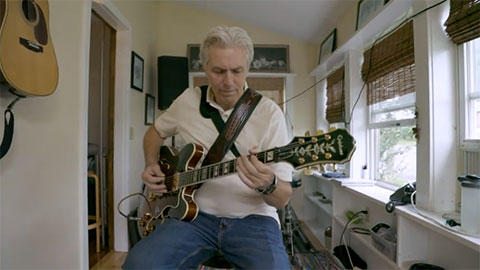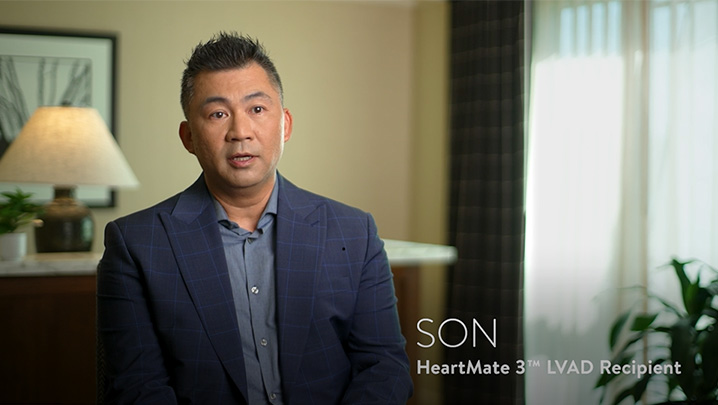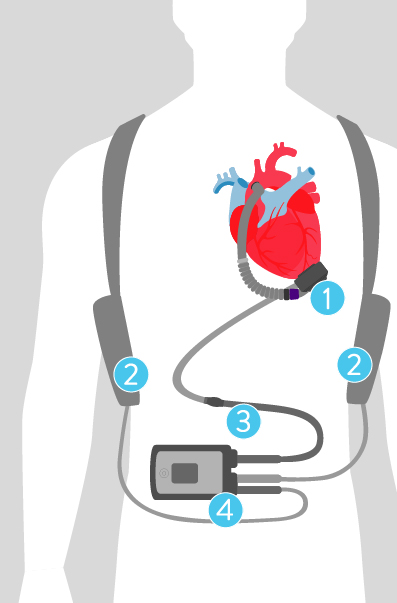If you or someone you know has been diagnosed with advanced heart failure, your doctor may recommend that you be evaluated for options to manage and treat your heart failure.
These short videos can help you understand if your heart failure is worsening and how treatment with the HeartMate 3™ Left Ventricular Assist Device (LVAD) may be an option available to you.
HeartMate 3 LVAD Videos
Understanding Heart Failure
In this video, you will learn about heart failure symptoms and options for managing and treating more advanced heart failure.
Understanding HeartMate 3 LVAD Therapy
In this video, you will learn about HeartMate 3 LVAD therapy and how it can help patients with advanced heart failure.
HeartMate 3 LVAD Life Stories
These are life stories of people diagnosed with heart failure. Now after choosing the HeartMate 3 LVAD, they are here to share how they are living life to the fullest and sharing their experiences.
Lisa's Story – Living with HeartMate LVAD
Ron's Story – Living with HeartMate LVAD
Jermayne's Story – Living with HeartMate LVAD
Dennis's Story– Living with HeartMate LVAD
Grey's Story – Living with HeartMate LVAD
David’s Story – Living with HeartMate LVAD
Martha's Story – Living with HeartMate LVAD
Loren's Story – Living with HeartMate LVAD
Zuleyma's Story – Living with HeartMate LVAD
Bouba's Story – Living with HeartMate LVAD
Son's Story – Living with HeartMate LVAD

Lisa's Story – Living with HeartMate LVAD

Ron's Story – Living with HeartMate LVAD

Jermayne's Story – Living with HeartMate LVAD

Dennis's Story– Living with HeartMate LVAD

Grey's Story – Living with HeartMate LVAD

David’s Story – Living with HeartMate LVAD

Martha's Story – Living with HeartMate LVAD

Loren's Story – Living with HeartMate LVAD

Zuleyma's Story – Living with HeartMate LVAD

Bouba's Story – Living with HeartMate LVAD

Son's Story – Living with HeartMate LVAD
Understanding the HeartMate 3 LVAD System
Treatment for advanced heart failure has improved greatly in recent years. Learn more about the HeartMate 3 LVAD.
- A small, implantable device that helps the heart pump blood
- Shown to reverse symptoms of heart failure and improve survival and quality of life1
- Can help people with heart failure return to enjoyable activities and active, full lives1
HeartMate 3 LVAD
(Left Ventricular Assist Device): Connected to the left side of the heart and moves oxygenated blood from the left ventricle to the rest of the body.

Batteries: Provide up to 17 hours of uninterrupted power.

Modular Driveline: Facilitates simple replacement of externalized portion.

System Controller: Powers and controls the LVAD and is small enough to fit in a pocket. Includes emergency backup battery.


Associated risk of LVAD therapy can include bleeding, stroke, thrombosis and other possible adverse events.
Talk to Your Doctor
It’s important to talk to your doctor and ask questions. By better understanding heart failure and your treatment options, you can make informed decisions to manage your heart failure.
If your doctor thinks advanced options may be necessary, including LVAD therapy, you will be referred to an advanced heart failure specialist for evaluation and for more information. The earlier you are seen by a heart failure specialist before your condition becomes worse, the more time you will have to decide and plan for your treatment.
Find a Heart Failure LVAD Clinic
Need help finding an LVAD clinic near you? Our LVAD clinic finder will connect you with an advanced heart failure care team in your area.
Additional Information
These materials are not intended to replace your doctor’s advice or information. For any questions or concerns you may have regarding the medical procedures, devices and/or your personal health, please discuss these with your physician.
These testimonials relate an account of an individual’s response to the treatment. The patient’s account is genuine, typical and documented. However, it does not provide any indication, guide, warranty or guarantee as to the response other persons may have to the treatment. Responses to the treatment discussed can and do vary and are specific to the individual patient.
References
- Mehra MR, Goldstein DJ, Cleveland JC, et al. Five-Year Outcomes in Patients With Fully Magnetically Levitated vs Axial-Flow Left Ventricular Assist Devices in the MOMENTUM 3 Randomized Trial. JAMA. September 8, 2022.
MAT-2003903 v9.0
